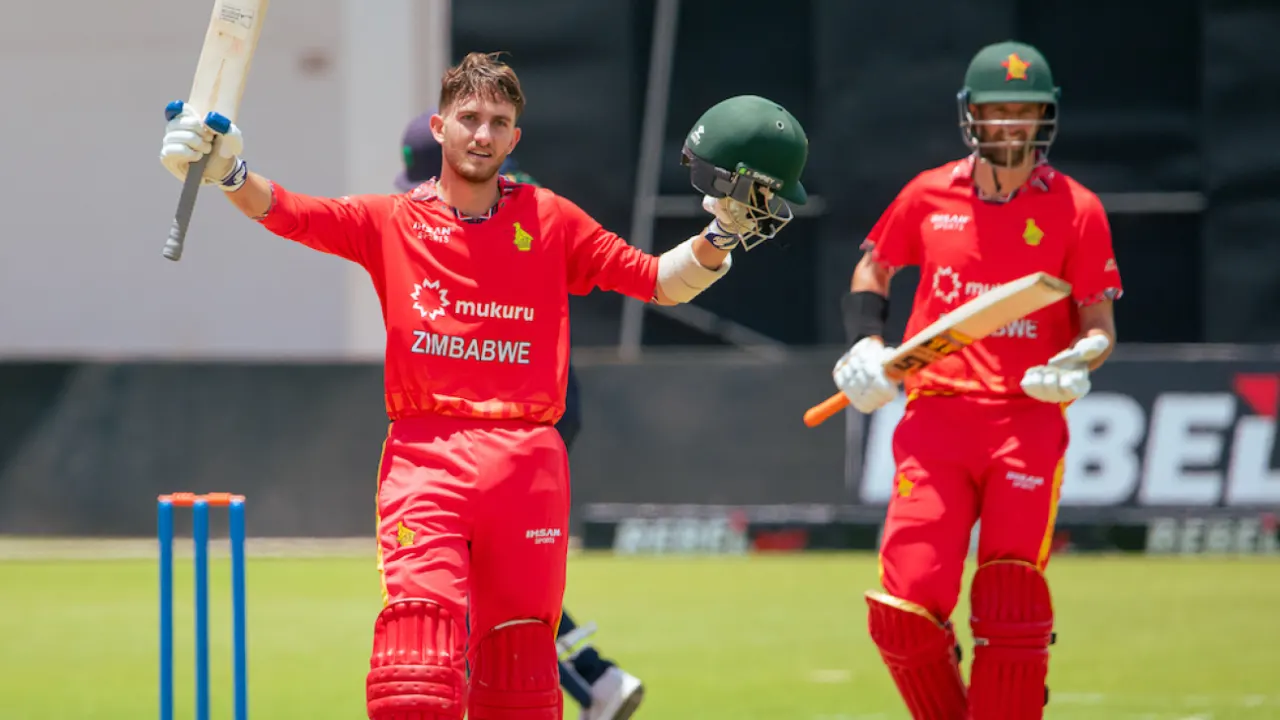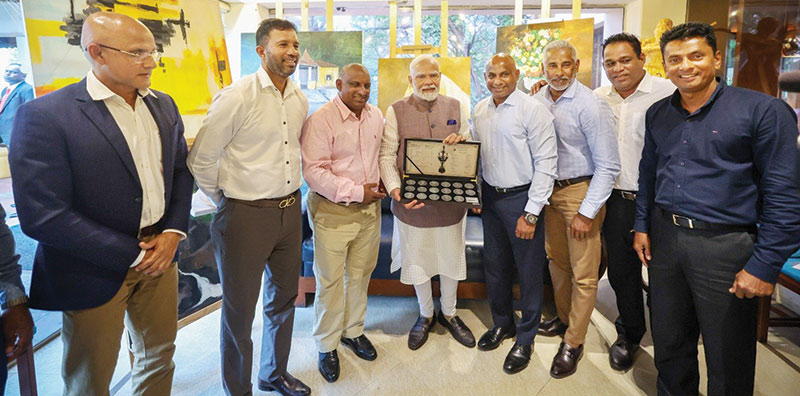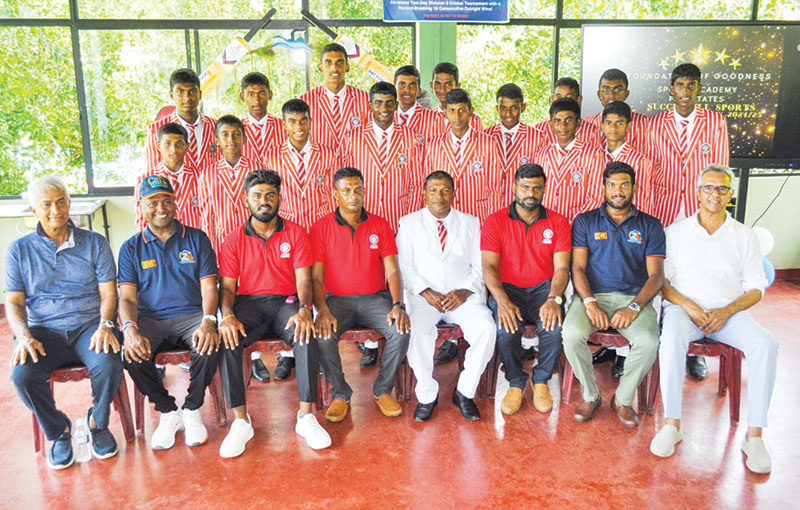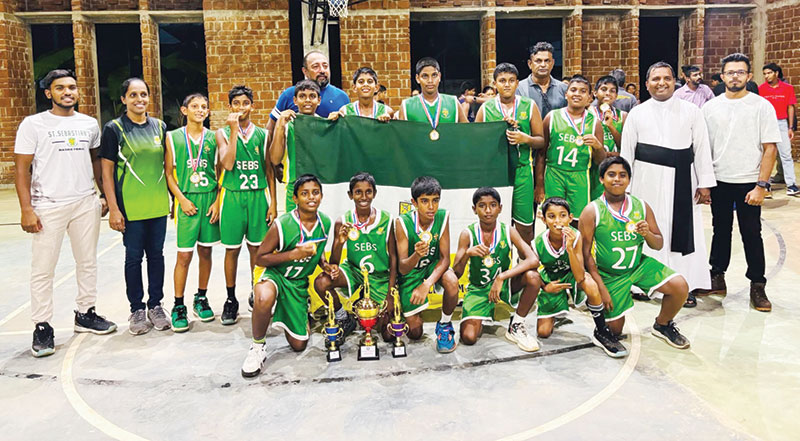Sports
Brian Bennett’s 169 puts Zimbabwe 1-0 up

Brian Benett delivered a Valentine Day’s gift to all the cricket lovers at Harare Sports Club with a sublime 169 to set up Zimbabwe’s 49-run win in the first ODI against Ireland on Friday.
Promoted to opener for the first time in ODI cricket, Bennett struck 56.52% of Zimbabwe’s total to give Ireland a target of 300 to chase. Along the way, he also became the fourth-youngest to score 150-plus in a men’s ODI and posted the fifth-highest ODI score by a Zimbabwe men’s batter.
The target, though, on a docile surface, was quite gettable, and Ireland went toe-to-toe for most of the chase. But they ran out of wickets – including four dismissals in their last ten deliveries of their innings – to fold for 250. Blessing Muzarabani (4 for 51) and Richard Ngarava (3 for 56) shared seven wickets, and Zimbabwe arrested their four-match losing streak to take the hosts 1-0 up.
A 9.30am start with rain in the air, and Harare historically favouring chasing sides, Ireland captain Paul Stirling made the logical call of bowling first. But Josh Little, the left-arm swing bowler, had a rough return to the ODI line-up as he conceded 35 runs in his first three overs. Bennett was the chief aggressor, pumping him for six fours in his first three overs, while Ben Curran carved another couple. He would eventually finish on 1 for 75 in nine overs with an economy of 8.33, conceding 11 fours and five wides in all.
The prolific start, and the lack of incision from the Ireland new-ball bowlers, allowed the Zimbabwe opening partnership to grow. They put on 95 for the first wicket before offspinner Andy McBrine (1 for 53) broke the stand.
There was no respite, though, as Bennett and the No. 3 Craig Ervine then added 136 in 134 balls in a second-wicket stand that was constructed masterfully. They were watchful through the middle overs with some turn in the pitch and the pair of Matthew Humphreys and McBrine appeared to strangle the pair.
While Bennett took an affinity towards point, extra cover, deep midwicket and deep square leg with his 20 fours and three sixes, Ervine was more adventurous by moving across and trying to find empty pockets over fine leg. As the stand grew and Zimbabwe’s run-rate got a boost, Bennett too played with the Ireland bowlers by using the width of his crease to create boundary-scoring opportunities.
The pair capitalised on three dropped catches and one missed stumping to bring up Zimbabwe’s 200 in the 38th over, and a big target was very much on before Ervine fell against the run of play to medium-pacer Graham Hume in the 41st over. Sikandar Raza and Wessly Madhevere, though, failed to keep the momentum up, and the big shots came from only Bennett’s end in the final ten. After batting for 216 minutes, Bennett perished in the final over trying to find a big shot, and his effort ensured Zimbabwe finished on 299 for 5.
“I was pushing them for a while to get up [to open], and happy to get that opportunity,” Bennett said after the game. “I just wanted to watch the ball and hit the ball. It’s a very good sign, and I hope to do that again on Sunday. I wanted to take it deep as one of the set batters among the top four.”
The chase began inauspiciously for Ireland as Andrew Balbirnie was caught behind off Ngarava in the first ball but the rest of Ireland’s batting unit showed enough promise that the chase could be pulled off, only to lose their wicket when the tide appeared to turn. Stirling was deceived by a Muzarabani short ball to fall for 32, Curtis Campher edged a wide ball from Raza to the keeper on 44, Harry Tector scooped Madhevere to fine leg on 39 and Lorcan Tucker inside-edged Muzarabani onto his stumps on 31.
At 169 for 6 in 35.2 overs, Ireland’s chase appeared to lose its fizz, but an eighth-wicket stand of 73 in 9.1 overs between George Dockrell (34) and McBrine (36) brought life into the game and started to make the home crowd nervous.
However, Ervine turned to Muzarabani for the 45th over, and he picked off both set batters in the space of four balls, and Ngarava wrapped up the tail in the 46th for a tame finish to a high-octane game.
“We gave Bennett a chance or two and he made us pay,” Stirling said after the defeat. “We were rusty [in the field] when we shouldn’t have been. I felt 50 runs was the difference between the two sides and the result reflects that. [A target of] 300 was chaseable, and at 30 overs we were in the hunt. But we lost our way. We bat pretty deep and hopefully we do well with the bat next game.”
Brief scores:
Zimbabwe 299 for 5 in 50 overs (Brian Bennett 169, Craig Ervine 66,Ben Curran 28; Mark Adair 2-55) beat Ireland 250 in 46 overs (Paul Stirling 32, Curtis Campher 44, Harry Tector 39, Lorcan Tucker 31, George Dockeel34, Andy McBrine 32; Blessing Muzarabani 4-51, Richard Ngarava 3-56, Wesley Madherve 2-12) by 49 runs
[Cricinfo]
Sports
Lankan legends, Modi and the Jaffna dream

Tamil Members of Parliament with roots across the Palk Strait are often quick to look towards India at the drop of a hat. But last week, all they managed was a photo op with Indian Prime Minister Narendra Modi – smiles, handshakes and little else. In contrast, Sri Lanka’s 1996 World Cup-winning cricket team was granted a 45-minute chinwag over tea with the Indian leader. The Indian High Commission in Colombo had arranged the meeting. Not even former President Ranil Wickremesinghe, with all his so-called diplomatic finesse, has managed to get a similar audience.
Pictures of Modi rubbing shoulders with Sanath Jayasuriya and Aravinda de Silva went viral in India on social media and it was the talking point across news channels and print media as well. And why not? Not since the marauding days of Sir Vivian Richards have Indian bowlers been sent on a leather hunt quite like they were by these two Sri Lankan giants. It was déjà vu for Indian fans – memories of the Wills World Cup semi-final at Eden Gardens, still fresh like an old wound that refuses to heal.
During the meeting, Jayasuriya pitched an idea to the Indian PM – seeking help to build a cricket stadium in Jaffna. It wasn’t a doosra out of nowhere. There’s a deep and genuine passion for cricket in the north. Some of the school big matches in the region have stood the test of time, with legacies stretching back over a century. Yet, due to decades of conflict, the region has remained a barren patch in terms of producing top-tier cricketing talent.
Since the guns fell silent, though, there’s been a fresh crop of hopefuls from the north. Leading the charge is leg-spinner Vijayakanth Viyaskanth – a name that’s now turning heads. Though his First-Class stats are more than decent, Viyaskanth has chosen the glitz and glamour of franchise cricket, where the pay cheques are fatter and the schedule less grueling.
Behind the scenes, Sri Lanka Cricket’s (SLC) District and Provincial coaches have done a stellar job, scouting and grooming pace bowlers and other youngsters from these long-neglected areas. Some of these boys have gone on to wear the Under-19 jersey with pride – a sign that the talent pool is slowly, but surely, filling up.
However, SLC’s grand vision of building new stadiums to attract larger crowds has hit a few bumps. The old guard – some former greats – have been quick to swing the bat in criticism. They’ve taken their eye off the ball, failing to see the bigger picture. Take next year’s T20 World Cup, for instance. Co-hosted by Sri Lanka and India, it promises to be a blockbuster. The high-voltage India – Pakistan clash is set to take place in Colombo, with the R. Premadasa Stadium’s 35,000 seats expected to vanish like isso vade at the Galle Face green. A bigger venue – like the proposed facility in Homagama – would have been just the ticket to meet such mammoth demand.
But Sanath’s plea is in a different league altogether. He’s not asking for a behemoth like Eden Gardens or the Narendra Modi Stadium in Ahmedabad. His is a humble request – a ground with decent infrastructure and floodlights that can host day-night matches. A facility like that would be a game-changer for the north, a true shot in the arm. Nothing ignites a young cricketer’s imagination more than watching their heroes up close, not through a television screen but under the stars, in their own backyard.
At present, the closest international venue to Jaffna is in Dambulla—hardly accessible, especially for aspiring fans and players from the peninsula. A ground in Jaffna would not only bridge that distance but also build a bridge of hope and opportunity.
Back in 2002, when Janashakthi opened a branch in Jaffna, the great Muttiah Muralitharan made the long road trip to play a friendly match on a matting wicket. The welcome he received was nothing short of electric. The crowd adored him, showering him with affection that could rival the warmth of any southern stand.
Since then, we’ve hardly scratched the surface when it comes to understanding the region’s cricketing appetite. If the Indian government lends an ear to Sanath’s appeal, we might just discover a goldmine of talent waiting to be unearthed in the north. Who knows? The next Murali or Malinga might be bowling on a dusty street in Jaffna this very moment – waiting for a stage, a spotlight, and a bit of help from across the Palk Strait.
by Rex Clementine
Sports
Sri Sumangala’s cricketing miracle

Sri Sumangala Vidyalaya, Hikkaduwa has scripted a fairytale rise in school cricket, marking a monumental milestone just 18 years after forming its first team. Once deprived of even a proper ground, the school now proudly boasts an unbeaten Under-19 team that has clinched both the Division III two-day and one-day championships — a rare double that has earned them promotion to Division 2.
The turnaround began in 2007 when the Marylebone Cricket Club (MCC) helped establish the Sri Sumangala MCC Lord’s Cricket Grounds following the devastating tsunami. This facility, offered free of charge, became a beacon for young cricketers who had talent but lacked opportunity. What followed is nothing short of a sporting miracle: 16 consecutive outright wins by the U19 team and national recognition in school cricket circuits.
This isn’t just a story of trophies and titles — it’s about breaking generational barriers. These young cricketers, once trapped in a cycle of poverty and obscurity, now inspire their community and set benchmarks for others in rural Sri Lanka.
The MCC’s early investment has borne fruit, turning dreams into tangible success. Today, the legacy of Lord’s lives not only in London but also in the hearts of the aspiring cricketers of Hikkaduwa — proof that when given a chance, talent can indeed take flight.
Foundation of Goodness has been a beacon of hope for sporting talents in the region and representation for Sri Lanka Women’s Under-19 team has been dominated by them. The same could happen with the men’s team in the near future.
Sports
St. Sebastian’s back on the basketball track

In the bygone years it was the Colombo schools that dominated basketball in Sri Lanka. Bens under Ram Sunderalingam, Peterites coached by Naufer Mahroof and the Josephians shaped by Mahadevan were the trojans who won tournaments. Led by this trio and flanked by other basketball playing schools in the capital, the game had its foundation laid down in concrete – Colombo style.
Moratuwa and Batticaloa were the painful thorns amidst the Colombo teams when it came to championships. And Trinco was the dark horse, almost unbeatable in their heyday, playing under the wizard, late Father Eugene Herbert. This is what basketball was, beginning from the sixties.
Today the faded memories remain. On a lucky day one might meet Doc Thurai, as he was popularly known, walking his wards with the stethoscope round his neck. He was the best we saw in that era. If one visits Batticaloa there is a prominent statue outside the town. It is of a tall Jesuit Priest. Here, he cradles a Wilson basketball ready to take a ‘time-out’ and yell at the referee. That is Father Herbert, the man who filled the Eastern Province with stellar players who left their luminous mark in the basketball courts of Sri Lanka.
More recently in April, on the 6th Sunday, I watched the under 13 ‘B’ division basketball finals between St. Sebastian’s and St. Thomas’ Prep. It was played at a flood-lit indoor court in Moratuwa. No, it certainly wasn’t in the league of Madison Square Garden, but it was more than adequate for a schools’ final. I sat on a wooden bench and watched the match thanking the court creator Sugath Thevarapperuma. I must mention this former national player who is doing yeomen service to promote basketball by establishing indoor courts in different locations.
Back to the match. It was good and exciting and the Sebastians won 37-36 by a solitary point. This was great for Moratuwa and the school and the young players. This victory would awaken the school and the basketballers from the doldrums they had been mired for a considerable time to say ;we are coming back’.
This 1-point victory I witnessed appeared to me as a catalyst for greater performances and perhaps an eye-opener for the Moratuwa lads. They are indeed capable of leaping bigger steps to reach higher pedestals in schools’ basketball championships. Yes, that is an achievable possibility, and the need is to change gears and go for the over-drive.
It is time for St Sebastian’s to forget the apathetic era and the reasons for such, and forge ahead with renewed motivation to re-claim former glories with their current potential.
The Thomians fought to the end. They certainly were equal in spirit and determination to become the champions. The difference was simply 1 solitary point. The pattern of play was the same by both teams and the award for the best player went to Akash Wijesinghe and Amantha Hettiarachchi was adjudged the best guard.
I noticed that some new rules have been introduced to control the game. The teams are only allowed to play ‘man-to-man’ and they could do so only from the center line. Additionally, the coach cannot use a double guard on the opposing best player. The teams are not allowed to use a zonal defense or play a floating man to man. If these rules came from FIBA then there is no argument. But if it is a local ramification of rules of how the game should be played, I have to humbly say that this will be a significant deterrent to coaches and players and a recurring headache to the referees. Over to you Sir, the Head of the Schools’ Basketball Association.
For me personally, it was an ‘Alma Mater delight’ to notice that the two coaches of the playing teams were both from St Sebastians and the assistant coach too was from my old school. Chaminda de Alwis and Susil Dias coached St. Sebastian’s and Isuru Perera the Thomians.
Chaminda captained the national team and Isuru had Ceylon Basketball colours and Susil represented All Island Schools.
Yes, St. Sebastian’s had a lot of glory days in basketball. Many of their players represented and captained the national team. Then one might ask, “how come they hit rock bottom playing a game they more or less dominated?”
The answer is simple, I will leave it for another day to elaborate.
On second thoughts, some things are best left unsaid.
by Capt. Elmo Jayawardena
elmojay1@gmail.com
-

 Business6 days ago
Business6 days agoColombo Coffee wins coveted management awards
-

 News1 day ago
News1 day agoSuspect injured in police shooting hospitalised
-

 Features2 days ago
Features2 days agoRobbers and Wreckers
-

 Features4 days ago
Features4 days agoSri Lanka’s Foreign Policy amid Geopolitical Transformations: 1990-2024 – Part III
-

 Midweek Review4 days ago
Midweek Review4 days agoInequality is killing the Middle Class
-

 Features6 days ago
Features6 days agoSri Lanka’s Foreign Policy amid Geopolitical Transformations: 1990-2024 – Part I
-

 Features5 days ago
Features5 days agoA brighter future …
-

 Business1 day ago
Business1 day agoSanjiv Hulugalle appointed CEO and General Manager of Cinnamon Life at City of Dreams Sri Lanka











